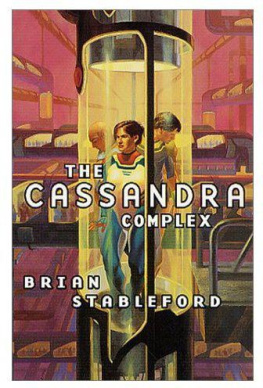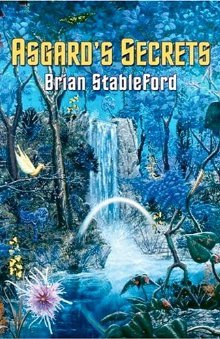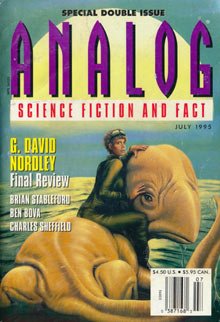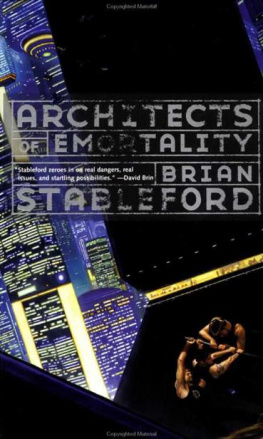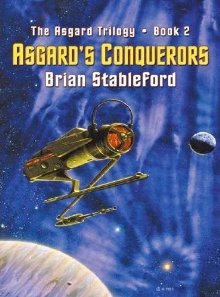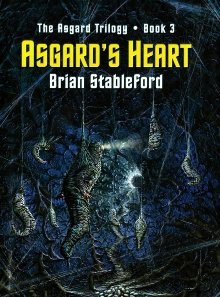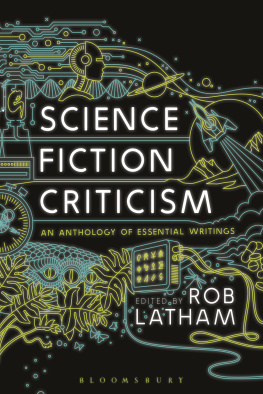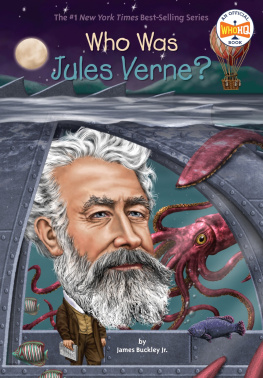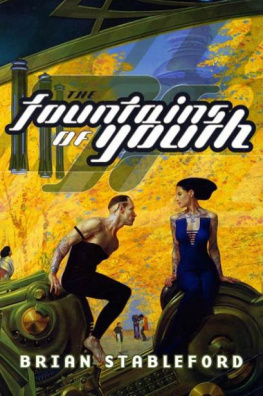Brian Stableford - Creators of Science Fiction
Here you can read online Brian Stableford - Creators of Science Fiction full text of the book (entire story) in english for free. Download pdf and epub, get meaning, cover and reviews about this ebook. year: 2011, publisher: Wildside Press, genre: Detective and thriller. Description of the work, (preface) as well as reviews are available. Best literature library LitArk.com created for fans of good reading and offers a wide selection of genres:
Romance novel
Science fiction
Adventure
Detective
Science
History
Home and family
Prose
Art
Politics
Computer
Non-fiction
Religion
Business
Children
Humor
Choose a favorite category and find really read worthwhile books. Enjoy immersion in the world of imagination, feel the emotions of the characters or learn something new for yourself, make an fascinating discovery.

- Book:Creators of Science Fiction
- Author:
- Publisher:Wildside Press
- Genre:
- Year:2011
- Rating:3 / 5
- Favourites:Add to favourites
- Your mark:
- 60
- 1
- 2
- 3
- 4
- 5
Creators of Science Fiction: summary, description and annotation
We offer to read an annotation, description, summary or preface (depends on what the author of the book "Creators of Science Fiction" wrote himself). If you haven't found the necessary information about the book — write in the comments, we will try to find it.
Creators of Science Fiction — read online for free the complete book (whole text) full work
Below is the text of the book, divided by pages. System saving the place of the last page read, allows you to conveniently read the book "Creators of Science Fiction" online for free, without having to search again every time where you left off. Put a bookmark, and you can go to the page where you finished reading at any time.
Font size:
Interval:
Bookmark:
I.O. Evans Studies in the Philosophy
and Criticism of Literature #50
ISSN 0271-9061
Copyright 1995, 1996, 1997, 1998, 1999, 2002, 2010 by Brian Stableford
Published by Wildside Press LLC
www.wildsidebooks.com
Edward E. Smith, Ph.D., was the man who invented space opera, although he preferred the label epics of space. Many writers before him had written tales of space travelmost of them journeys to the moon or Marsand a few of their heroes had gone further afield than the solar system, but most imaginary voyagers who had embarked upon interstellar odysseys had done so in the spirit of the voyages extatiques penned by the French astronomer Camille Flammarion, rapt with wonder at the immensity and magnificence of the universe. One very obscure British scientific romanceRobert William Coles The Struggle for Empire (1900)had looked forward to a day when the all-conquering British Empire might extend its colonial wars as far as Sirius, but no one had ventured to suggest that the entire sidereal system might one day serve as a gigantic playground for pioneers until Smith wrote The Skylark of Space .
Smith completed the text of The Skylark of Space in 1920, when he was thirty years old, having started it five years earlier in collaboration with Lee Garby, the wife of a neighbor. He submitted it to numerous book publishers and pulp magazines, but it was consistently rejected until the specialist science fiction pulps came into being in the late twenties. Smith became one of a precious handful of writers who had already produced work that was too bizarre to find a home elsewhere, but could immediately be slotted into place within the nascent genre, helping to define its field. Stanton A. Coblentz and John Taine (Eric Temple Bell) were other such writers but neither was to provide such an important precedent as Doc Smith. Although Taines The Time Stream which was written a decade earlier than its publication in 1931was equally daring, after its own particular fashion, it did not have the same potential to make an explosive impact on a readers imagination as The Skylark of Space .
It was probably Amazing s then editor, T. OConor Sloane, who insisted that Smith should add his doctorate to his byline. The editors of the early sf magazines were very anxious to give the impression that they were not merely marketing one more brand of pulp fiction, and they made the most of whatever scientific credentials their writers had. The fact that Smith was a food scientist specializing in doughnut mixes was to cause much sarcastic comment in years to come, but he was not guilty of any real dissimulation in parading his qualification; he never made any strenuous attempt to pretend that The Skylark of Space was a realistic novel of the future.
By the time The Skylark of Space actually appeared in print, in the August-October 1928 issues of Amazing Stories , Smiths invention had been partly duplicated by Edmond Hamilton, the first of whose tales of the Interstellar Patrol began simultaneous serialization in the August 1928 issue of Weird Tales . Hamiltons series, however, consisted of tales of a distant future inhabited by men with bizarre names and superhuman proclivities. While the hectic action/adventure stories were certainly not rhapsodic voyages extatiques , they were decisively distanced from the world of the reader. Smiths story began in that world; its opening paragraph dispatched a copper bath coated with a previously-unknown metal into the interstellar wilderness, hurtling through space with breathtakingly casual panache, and then sent supposedly ordinary people off in pursuit of it. Readers could identify with Smiths Richard Seaton with a ready ease that could not be duplicated in contemplating the exploits of the Interstellar Patroland the importance of that readiness of identification, especially for young readers, should not be underestimated.
* * * * * * *
The Skylark series proper consists of three volumes, the original serial being followed by Skylark Three ( Amazing August-October 1930), and Skylark of Valeron ( Astounding August 1934-February 1935). A fourth novel, Skylark DuQuesne , was serialized in If in 1965, but Smith was in his seventies by then and science fictionincluding space operahad become far more sophisticated; the addendum to the series had nothing to recommend it but nostalgia-appeal.
It is difficult for todays readers, who are fully accustomed to the use of galactic empires as narrative stages, to appreciate the impact that the opening paragraph of The Skylark of Space had on its contemporary readers. By the same token, young people who find no difficulty at all in orientating themselves with the plots of Star Trek and Babylon-5 are bound to find the clean-cut Seaton, his pal Martin Crane, and their respective girl-friends a trifle unconvincing as heroes shaped for such a stage. The villains of the Skylark seriesrich businessmen with political ambitions, soon to be aided, and eventually replaced, by wave after wave of ugly alienshave not been so rapidly superseded by the evolution of space operatic clich, but the authors blithe assumption that genocide is the appropriate solution to most diplomatic problems (Humanity ber alleshomo sapiens against all the vermin of the universe! Seaton cries, as he sets out to save the humans of Valeron from the depredations of chlorine-breathing amoebas) is bound to seem crass as well as crude in a post-Hitler era. In its original incarnation, however, the series was possessed of a remarkable and unprecedented exuberance that transported many of its readers into imaginative terra incognita .
The Skylark series is a straightforward and unashamed power-fantasy, which took that underrated art-form to a new extreme. Seaton continually trades in his starships for bigger and better ones with much-increased firepower (usually described in terms of the mastery of new orders of radiation). Although his personality remains stubbornly boyish, his mind becomes a sponge for the accumulated wisdom of whole races, increasing his personal capabilities to the point at which he can take on disembodied beings of pure intelligencea conventional representation of the ultimate end of evolutionand beat them at their own game. At the end of the third volume, he bottles up these inconvenient adult-substitutes with Blackie DuQuesne in a prison of pure force, exiling them to the very edge of the universe (where they remained, incapable of disrupting the heroes good clean fun, until they were required to provide leverage for the plot of the belated fourth volume).
It is the subjugation of all the series science-fictional ideas to the cause of juvenile power-fantasy that establishes The Skylark of Space and its sequels as the true progenitors of space opera. Edmond Hamiltons space operas are just as wild in their inventions, but they retain a shadowy respect for scientific method and a subtle undercurrent of adult cynicismboth of which were to be dutifully elaborated in subsequent contributions to the subgenre by John W. Campbell Jr. and Jack Williamson. None of these later writers were bashful in their employment of marvelous super-science, but none of them ever showed the same level of conscienceless disrespect as Smith did in the Skylark series. Despite the Ph.D. that his editors continued to append his byline, Smith did not pay the slightest lip-service to the limits of actual possibility while he was chronicling the continuing adventures of Richard Seaton; as befit their collective title, in the Skylark series he deployed his pseudoscientific jargon as a straightforward mask for magic and miracles.
Smith was not incapable of writing space operas of a slightly more restrained kind, nor was he unwilling to do so. The Spacehounds of I.P.C. (1931), which was serialized in Amazing after Skylark Three , uses its pseudoscientific notions in a manner much more reminiscent of John Campbell, who had made his debut a year earlier. Triplanetary (1934)which Smith wrote for the higher-paying Astounding , then edited by Harry Bates, but had to divert to Amazing when the Clayton magazine chain collapsedalso plays with its ideas in a more scrupulous and respectful fashion. Significantly, neither novel extends its action beyond the inner solar system, and their reception by readers was sufficiently lukewarm to ensure that Smith then went back to doing what he did best. When Astounding began publication again, under the aegis of F. Orlin Tremaine, he completed the Skylark trilogy in the most grandiose fashion he could contrive, and then he went on to plan a new series, whose entire raison dtre was that it would be more grandiose still: the Lensman series.
Font size:
Interval:
Bookmark:
Similar books «Creators of Science Fiction»
Look at similar books to Creators of Science Fiction. We have selected literature similar in name and meaning in the hope of providing readers with more options to find new, interesting, not yet read works.
Discussion, reviews of the book Creators of Science Fiction and just readers' own opinions. Leave your comments, write what you think about the work, its meaning or the main characters. Specify what exactly you liked and what you didn't like, and why you think so.

